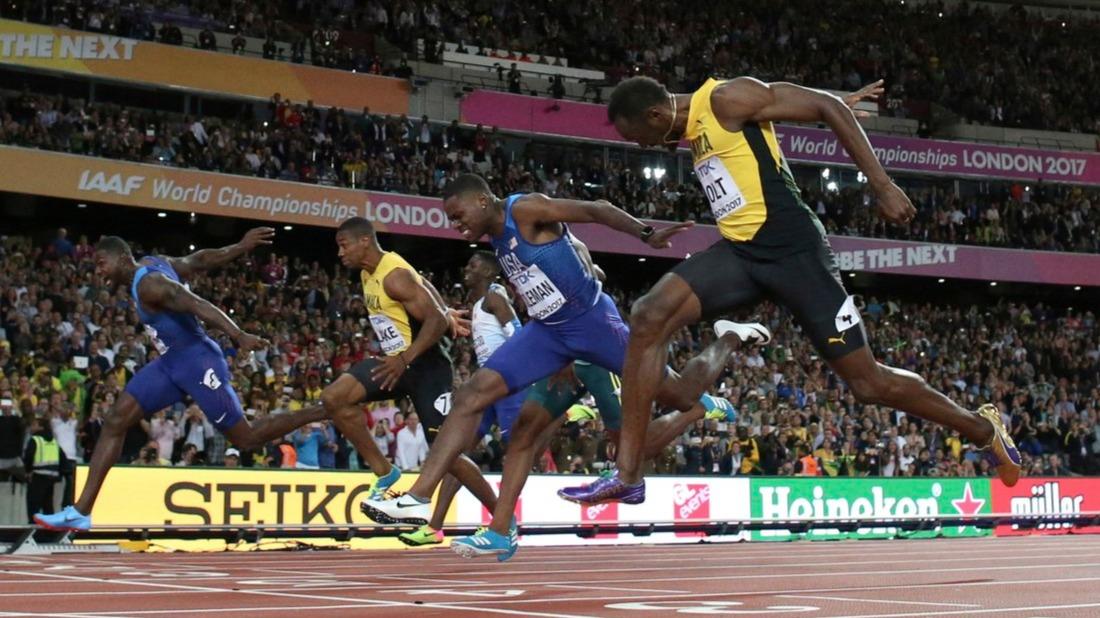High performance sports and the cult of execution: a response to The Krauthammer Conjecture
 Wednesday, August 9, 2017 at 03:56PM
Wednesday, August 9, 2017 at 03:56PM 
Sportswise, odd-numbered summers are boring. On the other hand, even-numbered summers are great -- you can reliably anticipate either a World Cup of soccer or a Summer Olympics, and there’s also a Euro soccer championship as an appetizer during Olympic years. Yes, things are getting better with the women’s soccer World Cup scheduled for odd-numbered quadrennials, and there are occasional one-offs like the World Cup of Hockey tournament. But the Olympics are the best, and both of the big soccer tournaments provide at worst a useful weeks-long distraction during long summer days at work, at best a heady fizz of genuine globally-focused drama.
Last summer’s Rio Olympics were better than most. I came out of it with two heroes, one expected and one not: Penny Oleksiak, the 16 year old Canadian swimmer who emerged from nowhere to win a whack of medals, and Usain Bolt, who cemented his status as the greatest sprinter (and maybe showman) of all time with one last triple gold performance.
And so the summer of 2017, already destined to be a letdown on the sports calendar, has been more of a bummer than anticipated. I was hoping for a bit of a repeat this summer from both my heroes of 2016, but at the world swim championships last month, Oleksiak had a middling meet, winning just two bronze medals in mixed relays. And then, more shockingly, Bolt finished a surprising third in his final 100 metre race at the Worlds in London and stumbled and fell in the 4x100 relay.
What seems a bit odd, though, is that these comparative failures seem to have bummed me out more than they have either Oleksiak or Bolt. For example, here’s Oleksiak after coming fourth in the 100m butterfly:
"I'm pretty happy with the race. I know there's stuff I can fix going forward. Overall I can't really complain, the race is over and I can't change anything.”
And she seemed even more unfazed about coming sixth in the 100m free, the race she won in Rio:
"It hurt a lot the last 20 metres, but overall it was a pretty good race," Oleksiak told reporters. "I've had kind of a difficult year, so I think being able to get around my best [time] was pretty good."
As for Bolt, he seemed resigned, almost comfortable with having lost (sorry, won bronze) in the last race of his career. He gave credit to gold and silver medallists Justin Gatlin and Christian Coleman, and made almost no excuses, aside from citing time the destroyer, for failing to deliver. He had been complaining a bit about the starting blocks during the heats, and he acknowledged that without a good start he knew he was in trouble. But he wasn’t making excuses, just pointing out the facts. (There was a bit of excuse-making after the 4x100, with Bolt's teammates complaining that race officials had made them wait too long in a cold changing room).
It’s not supposed to be like this, right? Athletes, especially the top competitors in the world, are supposed to live and breathe victory. Defeat isn’t just a disappointment, it is a soul-crushing event. At least that’s how Charles Krauthammer portrays things in a recent column entitled “Why do they even play the game?”.
In it, he offers The Krauthammer Conjecture:
In sports, the pleasure of winning is less than the pain of losing. By any Benthamite pleasure/pain calculation, the sum is less than zero. A net negative of suffering.
Which, he goes on to add, makes you wonder why anyone plays at all.
As evidence in support of the conjecture, he points to a number of famous examples, old and new, of athletes being utterly devastated by defeat: LeBron James, Ronda Rousey, Ralph Branca, Sonny Liston. He also states that any parent who has a child in Little League or minor hockey or what have you, can attest to the validity of the conjecture.
If Krauthammer is right, then we have a genuine conundrum on our hands: Because sports produces far more losers than winners, anyone who plays a competitive sport, at any level, is behaving in a fundamentally irrational way. And to make it clear, Krauthammer believes the negative return from losing is not cancelled out or overcome by the money professionals earn. The calculus comes out negative no matter how much you make in the losing.
There are a number of additional variables that affect the cost-benefit analysis, and which Krauthammer ignores. Things like cameraderie, physical fitness, character-building, and other aspects of sports that don’t get caught up in the straightforward winning/losing tradeoff. But we can ignore those for the time being, because I think The Krauthammer Conjecture can be refuted from my armchair: If anything, athletes these days seem less concerned about losing than the fans who cheer them on. And it’s not just professionals, it’s amateurs as well. Why is that?
I think it is due to what we can call the cult of execution.
Success in sports is a function of five components: preparation, strategy, tactics, execution, and chance. The relative importance of any one of these components varies considerably from one sport or event to another (for instance, strategy plays a bigger role in the 10 000 metres race than the 100 metres), but every competitor's outcomes are determined by the interplay of all five components.
Up until, I dunno, the end of the nineties, participants in most sports, even ultra high-level professional sports like World Cup soccer, exhibited considerable variation in all of these components. The sports world in general was, to use an inadequate term, a lot looser. Significant differences in fitness levels, in strategic innovation, tactical skills, and so on all helped give the tactical and strategic space a more open and almost random character.
To give just two examples of what I mean: The ‘72 Summit Series between Canada and the USSR was marked by significant differences in styles of play, tactics, and fitness levels. Their style of hockey having evolved in basically closed ecosystems, when the two teams met there was a great deal of mismatch, and thus a lot more room for “intangible” things like heart, grit, or chance. In a completely different context, think of legendary footballers like Maradona or Paul Gascoigne, both of whom excelled and even dominated, despite being (more or less) fat guys. They could compensate through raw talent and tactical genius what they lacked in preparation.
For both soccer and hockey, things have changed enormously. Both sports are now dominated by conformity at virtually every step in the success chain: everyone prepares like crazy (middle school soccer kids now do two-a-days), there’s been tremendous strategic compression, which has led to less and less tactical innovation. What’s left as a variable, aside from chance, is execution.
Execution is the performance of a tactical decision. In the simplest events or sports, execution of a task or movement is what puts the competition in motion and, iteratively, drives it towards its conclusion. As H.A. Dorfman puts it in his book The Mental ABCs of Pitching, "the execution of pitches, one at a time, is the singular task that moves a baseball game from its beginning to its close." The pitcher's role consists entirely of selecting a pitch (fastball, slider, changeup) and a location (inside, outside), focusing on the target (the catcher's mitt), and delivering the pitch to the target.
Sports like diving and gymnastics have a lot in common with pitching, in that they are almost zen-like in their simplicity: manoeuvre selection (the kind of dive, or vault), its mental visualization, then physical execution. But every sport ultimately comes down to execution, from stroke or stride quality and consistency in swimming or sprinting to serve delivery in volleyball to proper pace and accuracy of passing in soccer.
Every high performance athlete has learned to speak the language of execution -- go back and read the quotes above from Bolt and Oleksiak. And this is largely a good thing: athletes have learned to focus on what they can control and worry less about factors they cannot. And talk of “execution” helps break down their movements and decisions into manageable units that can be worked on or developed independently -- which is exactly where Oleksiak's head seems to be at, thankfully.
But this is where almost all high-performance sports has ended up: Thanks to relentless globalisation and the remorseless ratchet of competition, everyone is using the same preparation techniques, drawing on the same narrow coaching playbooks and training regimens. In most sports there are no more strategic or tactical secrets, to the point where the role of intangibles like talent or heart or even chance is being squeezed out of the performance function.
But this means the jargon of execution has a downside, which that for many athletes talk of “execution” is starting to serve as a sort of security blanket -- a catch-all explanation that borders on the tautological. You lost because you didn’t execute, but the only proof you didn’t execute well was that you lost. For example, here’s Jamaican sprint star Elaine Thompson trying to explain how she stumbled to sixth in the final of the 100 metres at the recent Worlds:
"In the first and second rounds I got the starts but I don't know what happened. I'm going to have to look back, and watch but no excuses. It was a good race," she said. "I'm very disappointed but at the end of the day it's not the end of the world.”
Not the end of the world for her maybe. But what about the three million Jamaicans who were desperate for some sort of redemption after Bolt’s loss?
I’m being facetious of course, but only slightly. But such dispassion certainly puts Krauthammer’s question in a different light than he intended. If they care so little, why do they even play the game?

